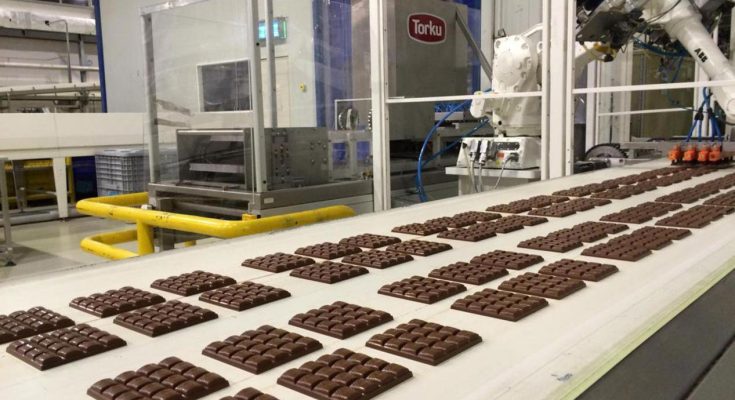Chocolate production is a precise and sensitive process, requiring materials that can handle unique challenges such as temperature fluctuations, high viscosity, and the need for impeccable hygiene.
PTFE tubing plays a crucial role in ensuring the efficiency, cleanliness, and longevity of chocolate processing systems.
1. Ensuring Hygiene and Food Safety
Chocolate is particularly sensitive to contamination, and maintaining hygiene throughout the production line is critical. Tubing used in chocolate transfer must resist bacterial growth and withstand repeated cleaning without degrading.
The non-stick, non-porous nature of PTFE prevents residue buildup, making it easier to maintain sanitary conditions. This is particularly important for avoiding cross-contamination between different chocolate flavors or batches.
2. Handling High-Viscosity Chocolate Flows
Molten chocolate is thick and viscous, requiring smooth internal surfaces to maintain consistent flow without clogging or sticking.
The low friction coefficient of PTFE ensures that chocolate moves efficiently through the tubing, reducing waste and preserving texture. This smooth transfer is vital during processes such as enrobing, molding, and depositing.
3. Resistance to Heat and Thermal Cycling
Chocolate production involves precise temperature control, from melting cocoa butter to tempering the final product.
PTFE tubing can withstand high processing temperatures without warping, melting, or releasing contaminants. It also performs well in low-temperature environments used for cooling stages, making it suitable for the full range of chocolate production processes.
4. Compatibility with Cleaning-in-Place (CIP) Systems
Production lines often undergo frequent cleaning cycles with hot water, steam, and chemical sanitizers.
PTFE tubing resists degradation from both acidic and alkaline cleaning agents, ensuring durability even with repeated CIP operations. This compatibility helps maintain productivity by reducing downtime for maintenance and replacement.
5. Preventing Flavor Contamination
Chocolate’s flavor profile can be easily affected by residual tastes or chemical leaching from processing equipment.
PTFE’s inert chemical nature ensures that it does not react with cocoa butter, milk solids, or added flavorings. This stability is essential for maintaining the integrity of premium chocolate recipes.
6. Long-Term Durability in Continuous Operations
In large-scale chocolate factories, production runs can operate 24/7. Tubing must withstand constant movement, vibration, and mechanical stress.
PTFE offers exceptional wear resistance, ensuring a long service life without frequent replacements, which reduces overall operating costs.
- Applications in Chocolate Production Lines
- Chocolate Transfer Lines – Moving liquid chocolate from tempering machines to molds or enrobers.
- Ingredient Dosing Systems – Precise addition of flavorings, sweeteners, or fillings without contamination.
- Cooling and Heating Systems – Circulating temperature-controlled fluids around chocolate molds.
- Viscous Syrup Lines – Handling caramel, ganache, and other high-viscosity fillings used in confectionery.




